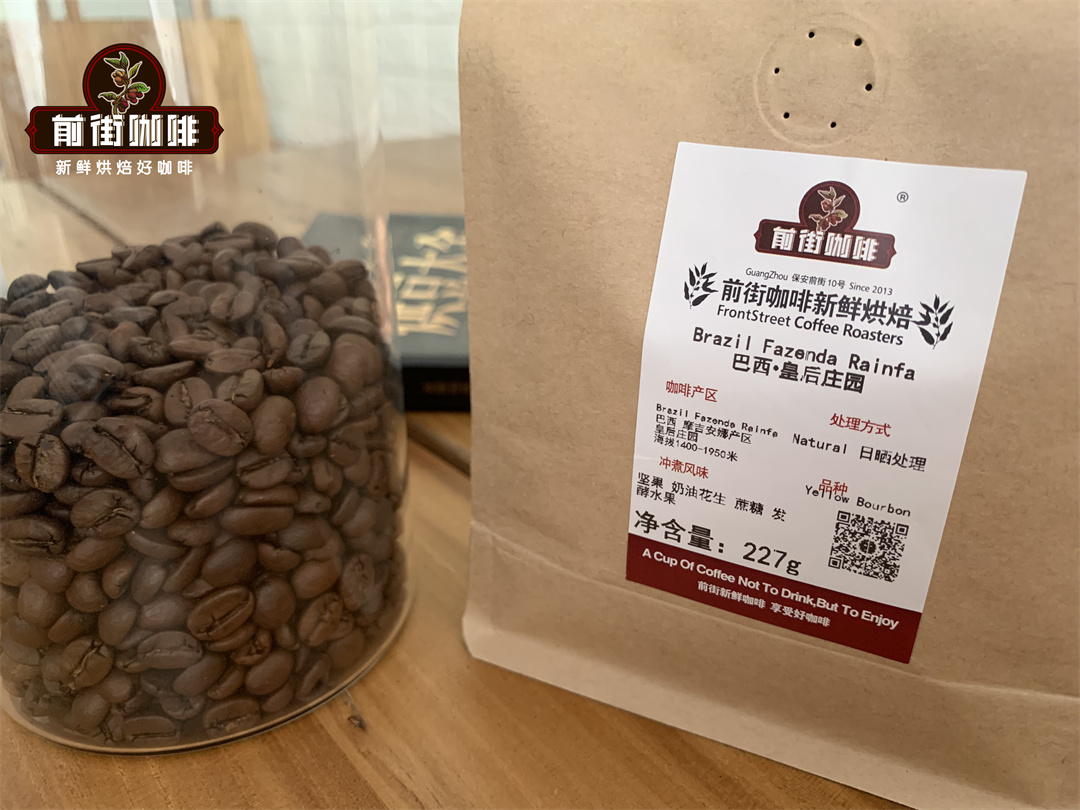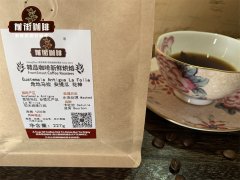Why is the acidity of Brazilian specialty coffee relatively low?
Brazil is not only the world's largest coffee producer, but also the most complex. It turns out that everything from mass-produced coffee to the cheapest coffee in the world to elegant coffee, which is regarded as the best espresso brewing in the world. In Brazil, it is not uncommon to use four different processing methods to remove fruit from beans, and all four methods are used on the same farm during the same harvest.
Brazilian coffee is not a highly cultivated thing. Brazil ranges from 2000 to 4000 feet above sea level, well below the more than 5000 elevations common for boutique coffee produced in Central America, Colombia and East Africa. The lower growth altitude means that Brazilian coffee has relatively low acidity. At best, they tend to be round, sweet and nuanced, rather than large and bright.
A few years ago, the Brazilian government deregulated the coffee industry, allowing large farms to sell coffee directly to consuming countries, regardless of the grading structure set by the government. As a result, coffee like Santos or Bourbon Santos also enters the American market directly from large farms called fazendas.
Quality coffee shipped from these farms to consumer countries is usually dry-processed or "natural" coffee. However, Brazilian estates may also be wet-processed, which will make them brighter in the cup, or they may be what Brazilians call pulpy natural or semi-washed coffee, which is dried without a skin. but the sticky fruit pulp still sticks to the beans. Usually, these fleshy natural coffees absorb sweetness from the pulp and are as full and sweet in the cup as dry coffee.

In any case, bitterness is a risk taken by Brazilian farmers when they try to get the round, sweet and fruity taste of the best dry coffee. Fazenda Vista Alegre, a Brazilian farm, is famous in the United States for allowing its dry-processed coffee to dry directly on trees rather than after picking. Unfortunately, these interesting coffees often reflect the disadvantages of dry processing rather than the advantages. The Vista Alegre coffee I often drink shows a slight edge of dryness damage.
The growing area of Brazil. The three main growing areas provide most of the high-end Brazilian coffee. The oldest Mogiana, located on the border between S ã o Paulo and Minas Gerais, north of S ã o Paulo, is famous for its deep, fertile red soil and sweet, full, round coffee. Located in South Minas in the southern state of Minas Gerais northeast of S ã o Paulo.
(Sul Minas) the rugged hills are the heart of Brazil's coffee country and are home to two of the largest and best-known Fazendas Ipanema and Monte Alegre. Serrado, a semi-arid plateau around Patrosinio, located between Sao Paulo and Brasilia, is a relatively new growing area. It has the worst scenery of the three areas with new towns and plateaus, but it can be said to be the most promising area for coffee quality.
Important Notice :
前街咖啡 FrontStreet Coffee has moved to new addredd:
FrontStreet Coffee Address: 315,Donghua East Road,GuangZhou
Tel:020 38364473
- Prev

New uses of coffee grounds Coffee grounds can deworm roses and like coffee grounds
Many of you may be looking for effective green techniques. Qianjie Coffee can be suggested as a way to recycle used coffee grounds. Coffee mixed with soil can be used as natural fertilizer. Used coffee grounds provide a rich source of nutrition for the garden. Recycling coffee grounds is not only good for gardeners, but also helps to reduce the amount of waste entering landfills. Coffee
- Next

What is the difference between the coffee beans of Antigua and Vivette Nan fruit producing areas in Guatemala?
The highlands of Guatemala produce some of the best and most distinctive coffees in the world. The mountain basin around the simple and beautiful colonial city of Antigua, Guatemala, produces the most outstanding of these highland coffees: Antigua, Guatemala, which combines complex nuances (tobacco, spices, flowers, and occasionally coincidence).
Related
- What brand of black coffee is the most authentic and delicious? what are the characteristics of the flavor of the authentic Rose Summer Black Coffee?
- Introduction to the principle and characteristics of the correct use of mocha pot A detailed course of mocha pot brewing coffee is described in five steps.
- Which is better, decaf or regular coffee? how is decaf made?
- How much is a bag of four cat coffee?
- How about four Cat Coffee or Nestle Coffee? why is it a cheap scam?
- Which is better, Yunnan four Cats Coffee or Nestle Coffee? How about cat coffee? is it a fake scam? why is it so cheap?
- How about Cat Coffee? what grade is a hoax? which instant coffee tastes better, four Cat Coffee, Nestle Coffee or G7 coffee?
- Process flow chart of coffee making-Starbucks coffee making process what coffee tastes good at Starbucks
- The top ten best coffee beans in the world Rose summer coffee or Tanzanian coffee tastes good
- Yunnan four cat coffee is good to drink?_four cat coffee is a big brand? four cat blue mountain coffee is fake?

